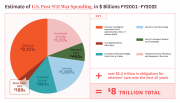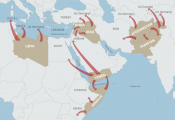Macroeconomic Impact
Since late 2001, the United States has appropriated and is obligated to spend an estimated $8 trillion through Fiscal Year 2022 in budgetary costs related to and caused by the post-9/11 wars — an estimated $5.8 trillion in appropriations in current dollars and an additional minimum of $2.2 trill...




